Toy Poodle Breed Information: Personality Traits, Temperament & More
When you purchase through links on our site, we may earn a commission. Here’s how it works.
Do you want a canine best friend but are concerned about dog hair and dander triggering your allergies? Perhaps you’ve heard that Poodles are great family companions, and they hardly shed at all, but you live in an apartment and are short on space. Look no further than the Toy Poodle. Far from delicate and aloof, the Toy Poodle is always up for a good time and loves being with you. His convenient size is just a bonus.
The Poodle breed comes in three sizes, and the Toy is the smallest of the group. Although he is a small dog, he’s not a shrinking violet. Toy Poodles are actually scaled-down versions of the Standard Poodle and are surprisingly good water dogs. Poodles were originally bred to retrieve downed fowl from the water and generally retain this instinct.
The Toy Poodle is a bundle of fun for anyone. They are just as well suited for a single human family as for a larger family with dog-friendly children. When you head out on an easy jog around your suburban block or a brisk walk through the city park, your fashionably smart sidekick will trot happily beside you. A generally healthy, happy companion, Toy Poodles do have a few health risks you’ll want to understand before you set out to find your new best friend.
Table of Contents
History
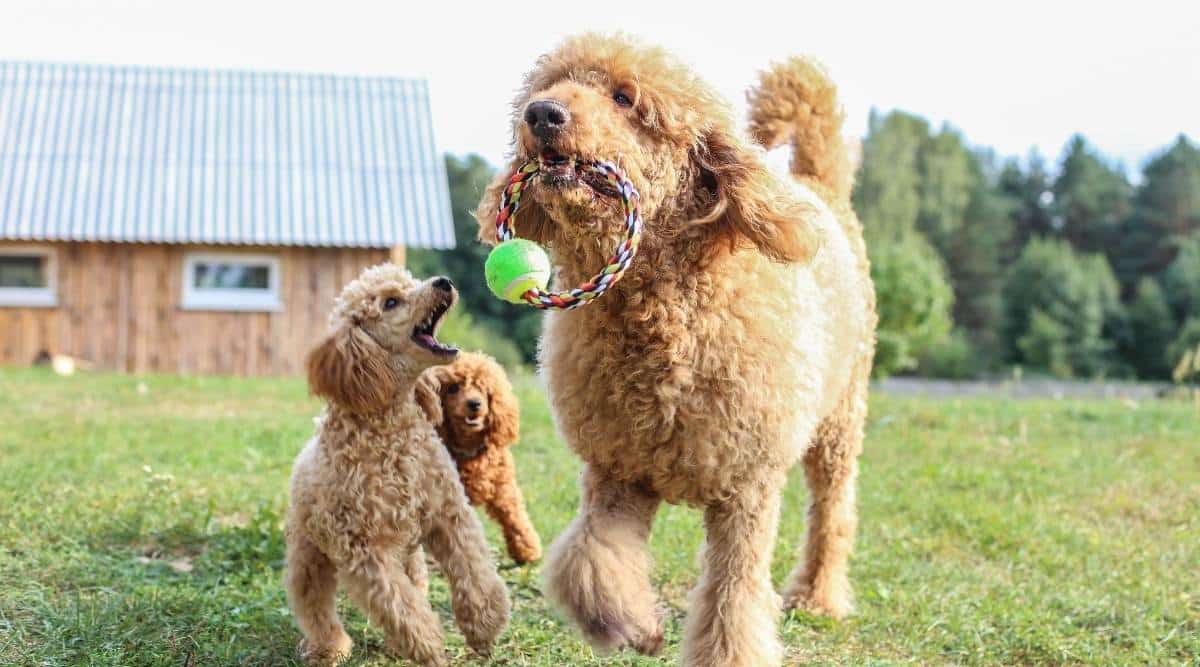
Originating in his native Germany, the name “poodle” comes from the German word “pudel” or “pudelin,” which literally means “to splash in the water.” The Poodle got this descriptive name because it was originally bred to retrieve ducks and other fowl for their hunters. While Poodles aren’t the breed that pops to mind when we consider retrieving dogs, they are actually well suited to the task. Their distinctive fancy “haircut” is actually a vestige of these earlier days as a hunter’s working companion.
As often happens with a popular breed, humans wanted the Poodle personality and intelligence but in a package more suited to a smaller space. Circuses were one of the driving forces behind breeding smaller versions of the Poodle. The trick dog shows found the highly intelligent, highly trainable dogs to be the perfect entertainer. Their breeding efforts made him portable. Initially, any Poodle fifteen inches or under at the shoulder was labeled a toy. After 1907, there was enough range in size that the smaller set was broken down into the Miniature at over ten to fifteen inches and Toy at ten and under. Our three modern sizes, Standard, Miniature, and Toy, were codified.
Temperament
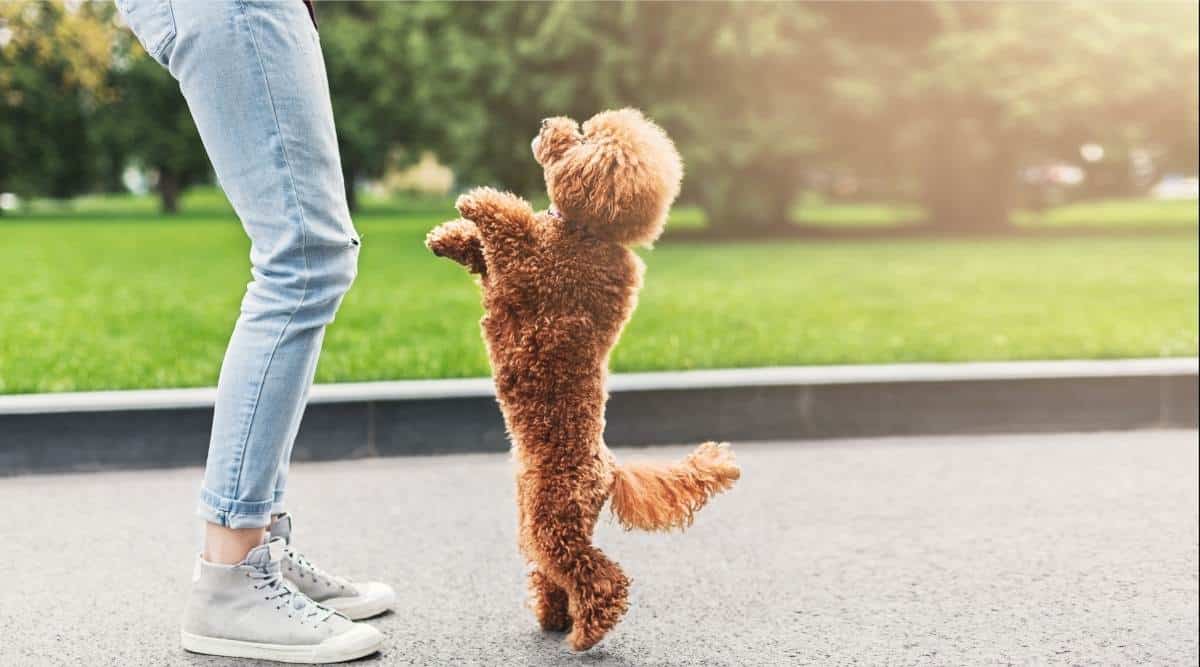
As hunting dogs, they had to be tuned in to cues from their hunters and able to work independently, too. Poodles are well known for their intelligence and rank in the top two or three most intelligent breeds. They can be taught just about anything, even tricks to entertain crowds at the circus. They retain the athleticism of their hunting dog origins and thrive on companionship and plenty of active play.
Toy Poodles are eager extroverts who want to help you with whatever you’re doing and require your active attention. They are not only energetic but also “wickedly smart,” and without physical and mental exercise, they may channel these energies towards destructive behaviors. Your pup can develop anxiety if left alone too long and can be overly excitable if he doesn’t receive enough exercise.
As part of a multi-pet family, Poodles usually get along with other dogs. They don’t have a high prey drive and can generally coexist peacefully with cats. Poodles may retain some instincts to retrieve and be too interested in pet birds and rodents in your home. Some poodles might follow those instincts and attempt to bite these tiniest members of your household.
Size & Appearance
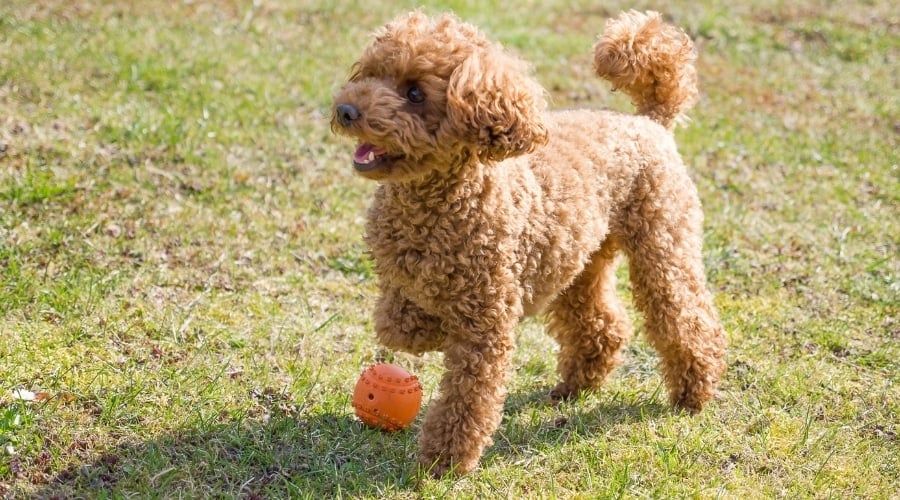
A tiny dog at a mere four to eight pounds and ten inches and under at the shoulder, the Toy Poodle is squarely built with bone in proportion to his body. Both fore and hindquarters are smoothly muscled, and his legs are structurally correct, toeing neither out nor in. His skull shows refinement in its long, elegant muzzle and chiseled appearance. The Toy Poodle’s chest is deep for his size, and both his head and tail are carried high and with verve.
Coat & Colors
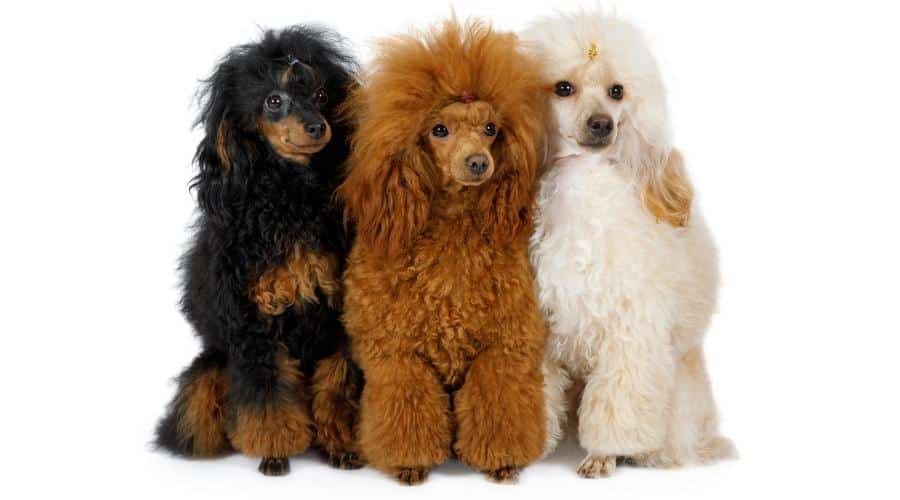
He has hair instead of fur, and instead of shedding seasonally, his hair grows steadily. This allows his coat to be worn either curly, with a water-resistant, dense texture, or corded, hanging in tight, even cords of varying lengths similar to a Puli or Komondor.
The Toy Poodle’s distinctive haircoat comes in a vast array of colors. The coat is an even and solid color down to the skin. Standard colors include apricot, black, blue, brown, cafe au lait, cream, gray, red, silver, silver beige, and white. Although a consistent color is preferred, some colors do show minor variation in the shading of the coat.
Many people with dog allergies seek the Poodle specifically because they don’t shed like a regular dog. Although they are much better for allergy sufferers than a standard breed, they are not completely hypoallergenic because no dog with hair can be. They still produce dander. If you are searching for a best friend and have severe allergies, consult with your doctor before bringing a pup into your home.
Exercise & Living Conditions

At least 90 minutes of exercise, preferably in two sessions each day should keep your Toy Poodle healthy and happy. Poodles of all sizes retain their instinct to retrieve. Throwing a ball or stick for him to retrieve not only exercises his body but provides a much-needed focus for his mind.
Toy Poodles love an easy jog or long walk with their human. Do keep his diminutive size in mind as you set your speed. Poodles, in general, don’t handle time away from you as well as other breeds, so before choosing one as your next best friend, be sure you’ll have lots of time to devote to him. Toy Poodles love to swim like their standard cousins, so indulge them with a refreshing dip but remember safety first.
Toy Poodles are indoor dogs that enjoy accompanying you on your outdoor forays. They won’t fare well as outdoor-only dogs. Their coat is not warm enough to handle cold weather, and he craves your attention. They do tend to have separation anxiety, so let him spend time with you perhaps in a comfy bed, his best friend, every day.
Training
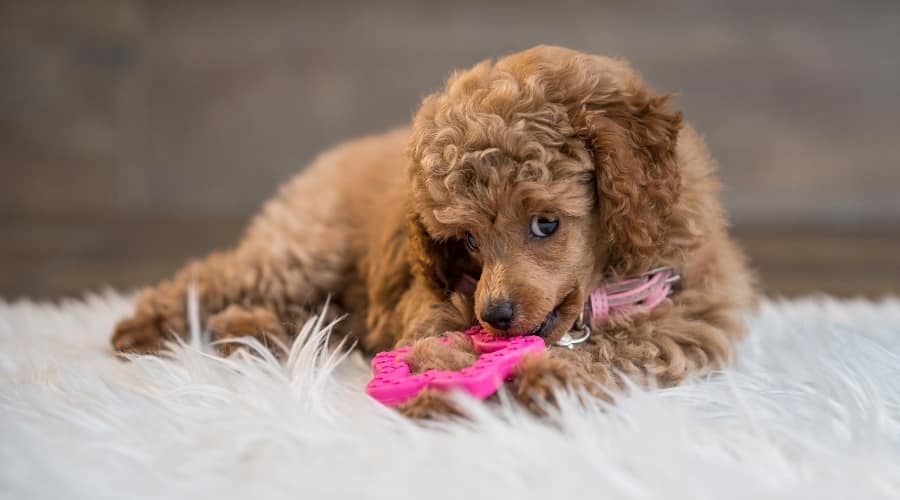
He can be trained to take part in obedience, flyball, dock diving, and agility events. He excels at learning tricks and will eagerly await the next lesson. Remember that boredom can send a Toy Poodle into an anxious state, so vary your training routines and keep him mentally sharp.
Health
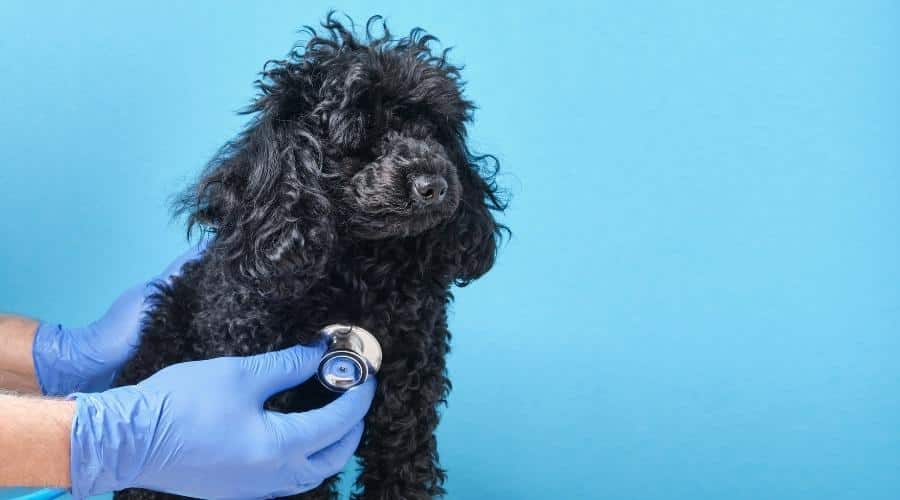
Toy Poodles can live as long as ten to eighteen years, but it is important to purchase a puppy from breeders who test their breeding stock for common hereditary issues. Avoid pet store pups and breeders who offer to ship a pup you’ve never seen because these scenarios can set you up with an unhealthy pet or even no pet at all.
Some of the breed’s problems include hip dysplasia and several eye disorders. They also have a higher than average chance of experiencing idiopathic epilepsy, sebaceous adenitis, von Willebrand’s disease, and immune-mediated disorders. Toy Poodles also can suffer from Legg-Calve-Perthes and luxating patellas.
Joint Dysplasia
Toy Poodles can suffer from hip and elbow dysplasia. Feeding a puppy formula that does not encourage rapid growth is advisable to help avoid this condition.
Eye Disorders
Toy Poodles may have glaucoma, which occurs when fluid cannot drain properly from the eye. The increased intraocular pressure leads to blindness if left untreated. Glaucoma is painful, and symptoms include tearing, squinting, corneal opacity (the clear front part of the eye becomes cloudy), and redness in the whites of the eyes. As glaucoma advances, the eye may look like it’s swollen or bulging. When you take your new pup to the vet, discuss annual eye screenings to help protect your buddy’s vision.
Toy Poodles may also have issues with cataracts. Cataracts tend to appear with age. While surgery is an option for this disease with its recognizable cloudy appearance, many elderly dogs adjust to blindness as long as their owner makes accommodations.
Idiopathic Epilepsy
Idiopathic epilepsy, a common hereditary disorder that causes seizures, can affect the Toy Poodle. The exact cause of the disease is unknown. Seizures typically occur at times of changing brain activity, like transitions from sleep to wakefulness.
Sebaceous Adenitis
This genetic health disorder affects Standard Poodles more than Toys. Inflammation in the oil-producing sebaceous glands in the skin causes the dog’s hair to fall out. It can also cause cysts, which require a veterinary consult. Do not try to drain these yourself, as you may inadvertently spread infection.
Von Willebrand’s Disease
This clotting disorder due to lack of sufficient ‘Von Willebrand’ protein could put your friend at risk of excessive bleeding. Ask your vet if he or she recommends performing the DNA-based vWD test from an approved lab to check for this disorder. The results will be registered with the OFA.
Immune-Mediated Disorders
Hemolytic Anemia and Thrombocytopenia are immune-mediated disorders. The immune system attacks the dog’s own red blood cells or platelets as if they were foreign invaders. This causes anemia which can present as lethargy and weakness. If you notice these symptoms and your pup’s gums appear very light or white, consult your veterinarian for diagnostic testing and a treatment plan.
Luxating Patellas
Luxation of the patella is usually a genetic condition. It typically affects small breeds. If you notice your dog holding a leg up for a few steps as he runs but then he uses it normally again, make plans to take your dog to the vet to check it out. This condition can lead to stiffness and arthritis later in life. Treatment varies with the severity of the condition. Mild cases of patellar luxation may be treated with NSAIDs to alleviate discomfort. In severe cases, however, surgery will be the recommendation.
Legg-Calve-Perthes Disease
Toy Poodles are prone to Legg-Calve-Perthes disease. This devastating disease typically affects small dog breeds in their first year of life. The disease causes the ball at the top of the femur to lose its blood supply, and it breaks down inside the hip joint. This condition is serious. Surgery to remove the ball of the femur can save the animal, but complete hip replacement may prove necessary.
Pet Insurance
Pet insurance is not a necessity, though it can be a great benefit in the case of an emergency that can result in high, unexpected vet bills. Insurance is available for Toy Poodles, but it is not something everyone chooses to purchase. Additionally, an add-on wellness plan can help balance out expenses for preventative care, and some employers now even offer pet insurance as part of their benefits package.
Nutrition
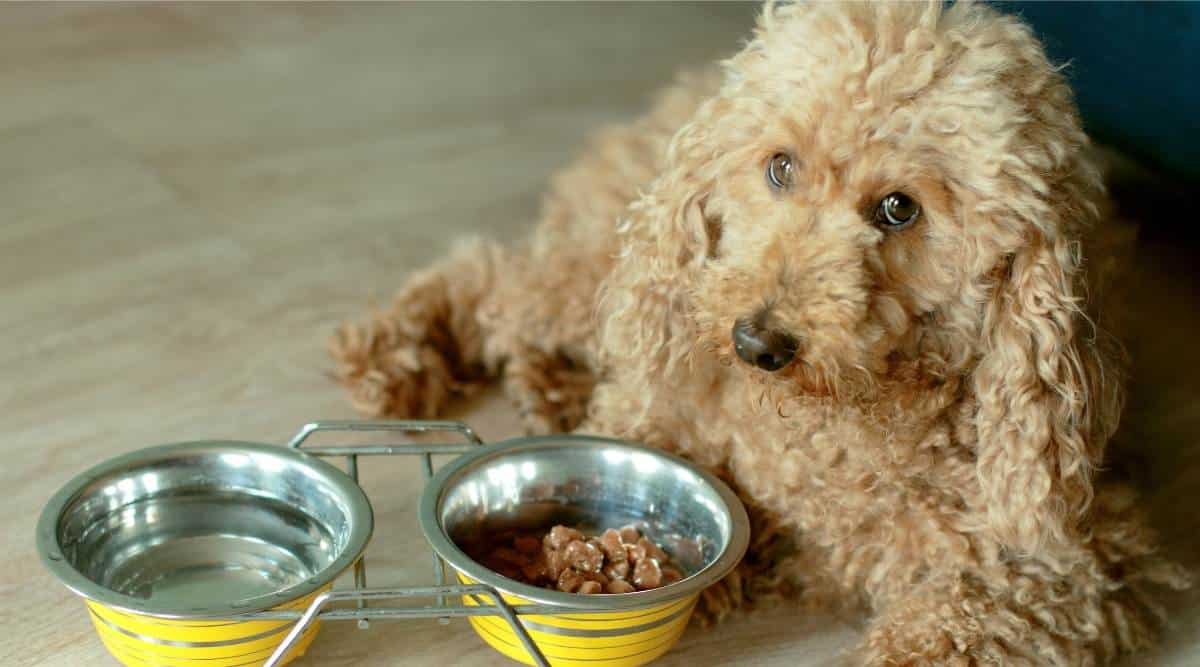
When he is a puppy, feed about a half-ounce of puppy food for each pound of body weight. He will be small, so make sure the size of the kibbles you offer him is not too much for his puppy teeth to chew effectively. As he grows, graduate him to an adult dog food balanced for toy breeds.
Although Toy Poodles are naturally active dogs, individuals may be prone to obesity. Give treats in moderation. Never feed a dog cooked bones or fatty table scraps. If your best friend starts to put extra pounds on his tiny frame, add fifteen minutes of exercise and double-check the portion recommendations on your chosen brand of food.
Grooming
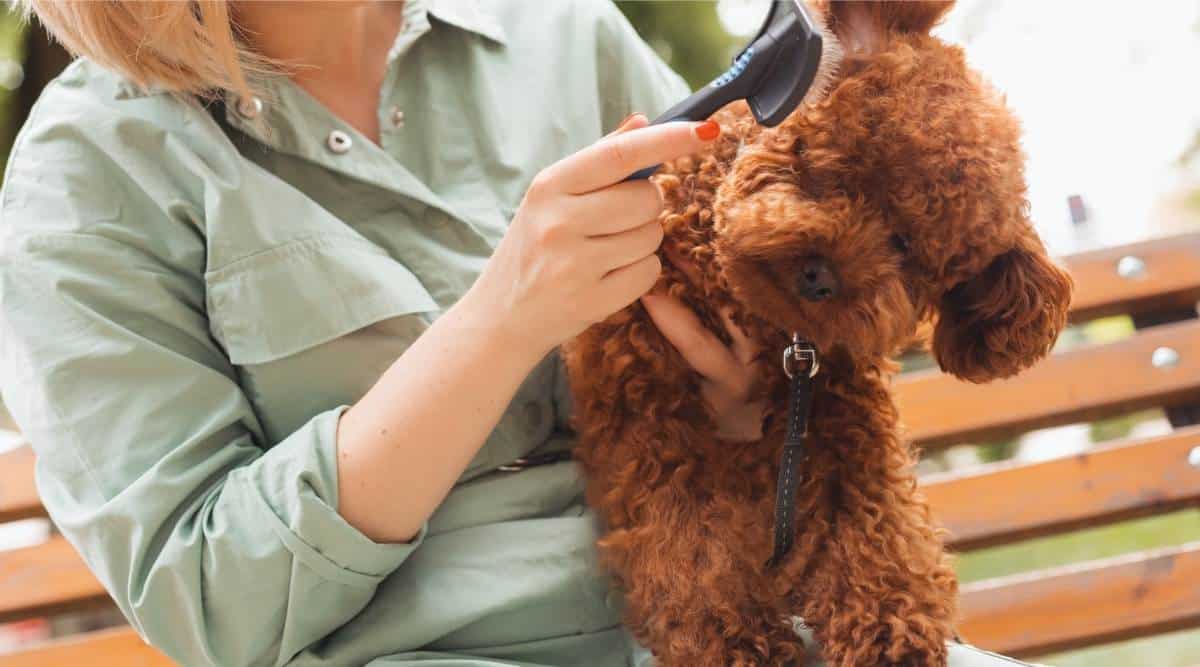
Keeping your Poodle’s hair trimmed is key since he doesn’t shed like most dogs. To trim your Poodle’s hair at home, professional groomers recommend Andis or Oster clippers, which offer easy snap-on blades. A size fifteen or thirty clipper blade would be used to trim the face, feet, and tail base. The higher the clipper blade number, the shorter the cut. A four to seven clipper blade could be used on the rest of his body.
If you’re not showing your pup, you may opt for the Puppy clip, which leaves his coat long, beyond his puppyhood. Only his face, throat, feet, and the base of his tail are shaved shorter. His only adornment is a pompon (not pompom) left on the end of the tail. To show your Poodle requires one of the show cuts, and it is best to consult a professional groomer. Depending on the classes in which they are entered, adult Poodles must have an English Saddle, Continental, or Sporting clip. Consult your rule books or a professional to see which is the correct cut. The Continental clip originally allowed freedom of movement when the dog was hunting but protected his joints and vital organs when he entered the cold water to retrieve birds.
Between trims and baths, both of which are only necessary every four to eight weeks unless your dog gets into something, a slicker brush will keep his coat mat free. Gently brush down all the way to his skin. Daily brushing is good for his skin and stimulates the production of oils that keep his coat healthy, but it is also an excellent time for the two of you to bond. He’ll look forward to the time you spend together, keeping him looking his best.
Breeders & Puppy Costs
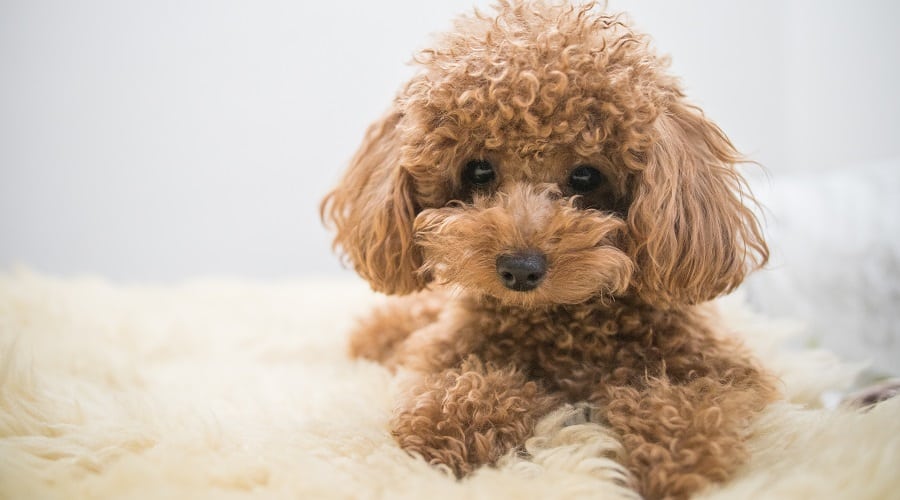
As a baseline, these puppies can cost anywhere from $500 to $3,000. Show quality dogs can easily cost up to $4,000 or more.
The Poodle Club of America or AKC websites can be helpful resources when you start your quest for the perfect puppy. Member breeders must abide by the PCA’s ethical guidelines. They don’t allow the sale of puppies through auctions, brokers, or commercial dealers such as pet shops.
Breeders working towards bettering the breed as a whole health screen their puppies’ parents and will be able to show paperwork to prove it. Ask for references from a vet in the breeder’s area. Most reputable breeders will offer you a written contract that promises to take the dog back at any time during his life if you find yourself unable to keep him.
Rescues & Shelters
You might consider adopting your new best friend. Visiting a local animal shelter is a great way to meet the adoptable dogs near you. If they don’t have any Toy Poodles available, they might be able to check nearby shelters for you. There are many well-established Toy Poodle rescue organizations on the internet, and there will likely be one or more in your state.
As Family Pets
In general, Toy Poodles are:
- Very small dogs with lots of energy.
- Athletic and water-friendly.
- Extremely intelligent.
- Natural retrievers.
- Unsuited to solitude.
- Friendly and get along well with older, gentle children and other dogs when well socialized.
- Very trainable and eager to please.
- If put in a fenced yard, able to squeeze out small openings.
- Interested in and accepting of strangers.
Final Thoughts
Don’t let his fancy coiffure fool you. The Toy Poodle is an athlete. A solid swimmer and natural retriever, he is a great family companion for many different styles and sizes of family. Because he is energetic and intelligent, the Toy Poodle packs all of the punch of the Standard Poodle into a few pounds of fun. Let him entertain you. His great mind and unsurpassed trainability make him excel in many disciplines or as your fascinating, intelligent best friend.



